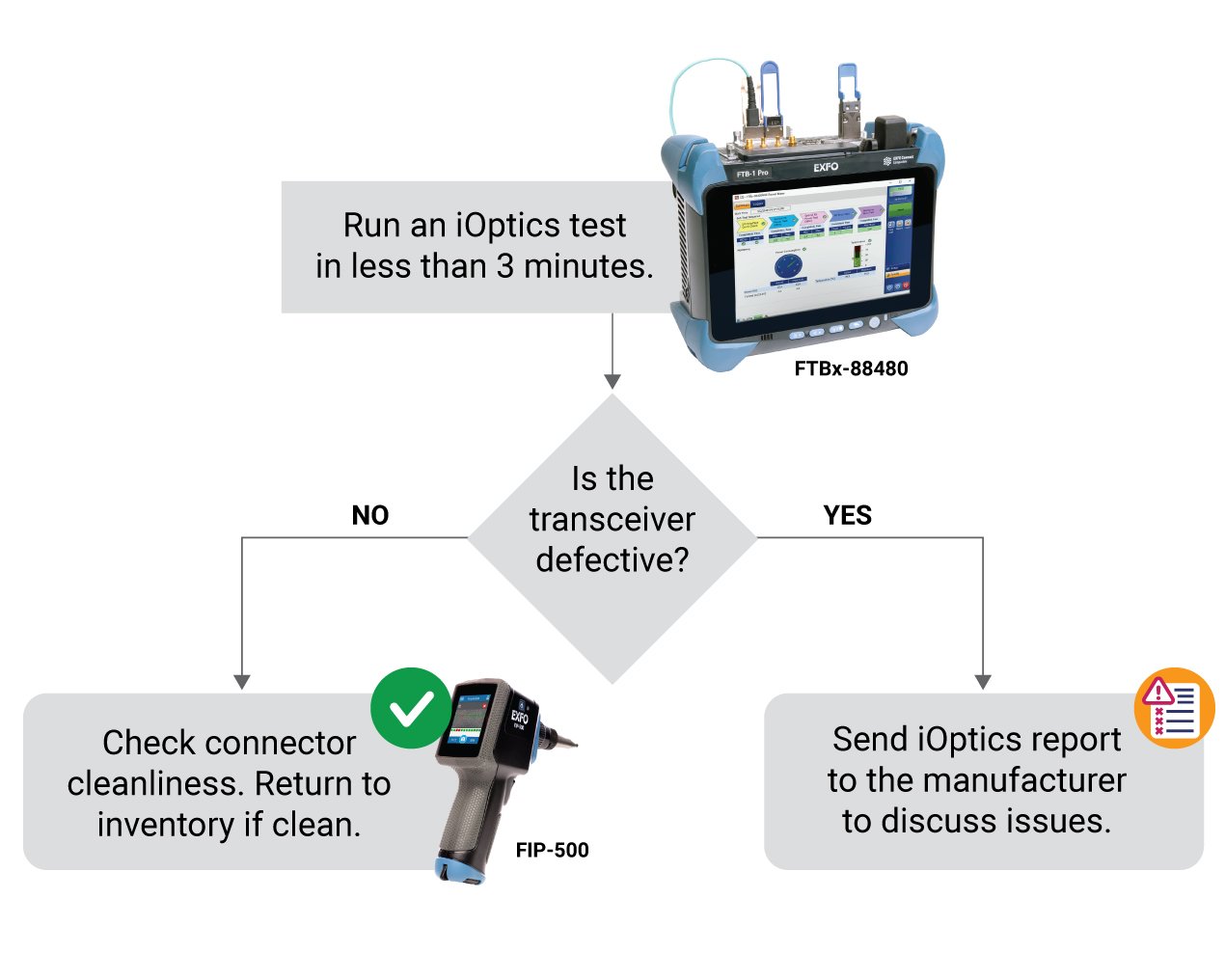Defective or functional? Why transceiver validation is important for sustainable hyperscaler data centers
Defective or functional? Why transceiver validation is important for sustainable hyperscaler data centers
The rapid growth of AI applications requires immense computational power to process large volumes of data at higher and higher speeds. Optical transceivers are key to the ability of hyperscalers to process the large volume of traffic resulting in part from that exponential growth in AI. Providing the necessary interconnection between network equipment, these small yet crucial components are the backbone of network communication, with the power to either maintain or disrupt the seamless flow of high-speed data transmission.
Why optical transceivers are critical components within today’s data center
Rapid data transfer, low latency communications, scalable bandwidth and long-distance connectivity are just some of the reasons why optical transceivers are indispensable technology within today’s data centers. Improving power use management is also a top priority for data centers. Reducing power consumption, in part by reducing heat generation and cutting subsequent cooling requirements, cuts operating costs while ultimately increasing profitability. From a big-picture perspective, cutting power requirements improves overall environmental impact and sustainability—very important factors to consider given ever-stricter governmental regulations around energy consumption and the focus of investors and communities at large on Environmental, Social and Governance (ESG) business policies.
Don’t be too quick to discard transceivers
Optical transceivers number in the thousands inside data centers—often numbering in the tens of thousands throughout larger facilities. Since the number of form factors and interface-types will continue to evolve, so too will the number and type of transceivers at play in any given data center. Malfunctioning transceivers can cause high bit-error-rates, loss of connectivity, slow network performance, and reduced signal strength. This is why faulty transceivers are often thought to be the source of network problems. Given the critical importance of network uptime, and the perceived complexity of testing such a wide variety of transceiver types, a potentially faulty transceiver is often promptly replaced to prevent any risk of network failure. However, the instinctive reaction to replace transceivers without proper diagnosis, leads to an accumulation of a large number of discarded transceivers, many of which may be in perfect working condition but are presumed faulty. This practice not only imposes significant financial costs on hyperscalers but also exacerbates environmental waste—a highly undesirable consequence for the reasons discussed above.
The challenge: how to quickly identify defective optical transceivers
The traditional approach to transceiver management has been largely manual and error-prone, relying on technicians to make quick decisions under pressure. Frequently, connectors go unchecked for cleanliness, leading to the unnecessary disposal of transceivers that could be salvaged with a straightforward cleaning. With thousands of pluggable transceivers in operation, this approach is becoming increasingly costly both financially and environmentally. But how can technicians quickly validate if a transceiver is defective or not?
The solution: EXFO's iOptics

EXFO’s iOptics addresses the urgent need for an efficient and reliable method of transceiver validation by assessing the health of a transceiver in less than 3 minutes. An automated, intelligent test application, iOptics is integrated into most of EXFO’s high-speed testing solutions, including the FTBx-88480 Series—a line of compact, dual-port 400G testers, available in both EXFO’s rackmount and portable platforms.
When a transceiver is found to be defective, iOptics generates a detailed report that can be used to discuss issues with transceiver manufacturers and vendors. On the other hand, if the transceiver under test is in good condition, the connectors are then checked for cleanliness and the transceiver can be returned to inventory for future use, saving money and reducing environmental waste.
The iOptics application supports a range of pluggable transceivers, cables and interface rates, including OSFP, QSFP28, QSFP56, QSFP+, SFP28, SFP+, SFP, AOC as well as DAC. The support for such a varied range of transceivers caters to the diverse needs of modern data centers that have a diverse mix of these pluggables throughout their facilities.
The impact: streamlined operations, reduced waste, and lowered costs
In conclusion, the adoption of iOptics not only results in significant financial savings and streamlines the transceiver validation process but also addresses the pressing need for major data centers to integrate environmental considerations into every aspect of their operations.
Would you like to learn more and see iOptics in action? Visit us at OFC 2024, March 24-28 at Booth #1017 or schedule a demo.




